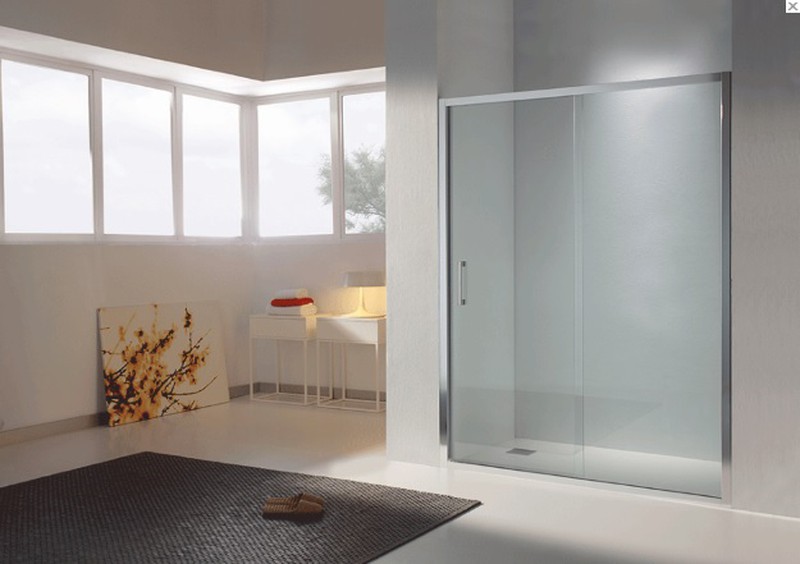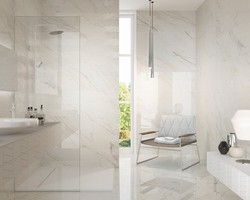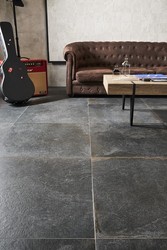Folding screens vs. sliding screens: Which one to choose for your bathroom?
The choice between folding and sliding shower screens is crucial when designing a bathroom. Both options offer different features that suit different needs and spaces. Folding shower screens are known for their wide access and easy cleaning, while sliding shower screens stand out for their space-saving and watertight properties. Analyzing the advantages and disadvantages of each type is essential to making an informed decision.
Understanding the Differences Between Folding and Sliding Shower Screens
Shower screens are key elements in the functionality and aesthetics of this space. When classifying shower screens, folding and sliding shower screens represent the two most popular options, each with distinctive features that suit different needs and preferences.
Folding shower screens work like traditional doors, opening inwards or outwards from the bathroom. This mechanism allows for wide access to the shower, making it easier to get in and out, especially for people with limited mobility. However, they require additional space to operate, which can limit their use in smaller bathrooms.
On the other hand, sliding shower screens move sideways, which saves space and is practical in small areas. This type of screen is very convenient, as they do not encroach on the surrounding area when opened. However, the opening of sliding screens can be a little more limited compared to folding screens.
Folding shower screens are ideal in large bathrooms where the space to open is adequate.
Sliding shower screens are perfect for compact environments, providing functional access without requiring additional space.
In terms of maintenance and cleaning, folding shower screens are simpler due to the absence of rails and guides, while sliding shower screens require more regular care to ensure their correct operation. The choice between the two will depend on the dimensions of the bathroom, the desired style and the specific accessibility needs.
Characteristics of Folding Shower Screens
Folding shower screens offer a series of features that make them unique and functional for any bathroom. Their design allows for a wide and comfortable opening, facilitating access and adding a touch of elegance to the space. Below is a breakdown of their main features.
Opening Mechanism
The opening mechanism of folding shower screens is similar to that of a conventional door. It is based on hinges that allow the doors to open inwards or outwards from the shower space. This design provides wider access, improving comfort when entering and exiting the shower.
Hinges must be properly installed to ensure smooth operation and prevent premature wear. The robustness of the mechanism not only affects the aesthetics, but also the durability and safety of the screen.
Common Materials
Folding screens are generally made from a variety of materials that can influence their appearance and functionality. The most common materials include:
- Tempered glass: This material offers excellent strength and safety. Its high durability makes it a popular choice for screens, as it prevents breakage during everyday use.
- Acrylic: Lighter and easier to install than glass, although it may be less resistant to scratches and impacts.
- Stainless steel: Used in hinges and profiles, it ensures corrosion resistance and a modern finish.
Styles and Designs
Swing shower screens are available in a wide range of styles and designs to suit different decorative preferences. The most common options include:
Single doors
These are flexible and open to one side, allowing for effective use of space. They are ideal for bathrooms that do not have much space, as they take up less surface area when opened.
Double doors
This type of screen offers even wider access when opened from the center. They are recommended for larger bathrooms, where a more comfortable and ostentatious entrance to the shower is sought.
Space Required for Operation
One of the most important considerations when choosing swing shower screens is the space required for their operation. Unlike sliding screens, swing screens require additional area to facilitate their opening. This space may vary depending on the specific model and design of the shower screen.
It is crucial to measure the area in which the screen will be installed, considering the possible interference with other elements of the bathroom, such as toilets or sinks. A suitable design will ensure that the doors can be opened completely without obstacles, offering an efficient and seamless user experience.
Features of Sliding Shower Screens
Sliding shower screens are a popular choice in modern bathrooms due to their functionality and design. These structures use a sliding mechanism that allows for convenient access to the shower or bathtub, optimizing the use of available space.
Sliding Mechanism
The sliding mechanism is one of the highlights of sliding shower screens. It consists of panels that move horizontally along a rail, allowing opening and closing without requiring additional space. This type of system provides ease of use and versatility in different bathroom configurations.
The track is designed to be sturdy and durable, ensuring smooth and efficient sliding. Many modern models incorporate roller systems that reduce friction and make opening and closing the doors easier.
Common Materials
Sliding screens are available in a variety of materials that influence their style, durability and water resistance. The most common materials include:
- Tempered glass: This type of glass is highly resistant and provides an elegant appearance. Its special treatment helps it withstand temperature changes and shocks.
- Acrylic: A lighter and lower-cost option, acrylic is easy to clean and is found in different finishes. However, it can be less scratch-resistant than glass.
Styles and Designs
Sliding screens offer a wide range of styles and designs to suit different aesthetic preferences and functional needs. Options include:
Single Panels
Single panels are a classic and simple option. They consist of a single panel that slides to open or close the shower access. Their minimalist design allows the screen to integrate harmoniously into any bathroom.
Multiple Panels
On the other hand, multiple panels allow for greater flexibility in design. These screens can include two or more panels that slide in different directions, offering wider and more customizable access. This system is ideal for longer showers or for spaces that require a particular configuration.
Space Required for Operation
One of the advantages of sliding screens is their ability to operate in tight spaces. Unlike hinged screens, which need additional space to open, sliding screens slide their panels sideways. This allows them to be installed even in bathrooms with limited dimensions.
To ensure optimal performance, it is recommended to leave enough space along the rail, avoiding obstruction of furniture or sanitary ware. This ensures that the panels can slide smoothly, facilitating access to the shower.
Advantages and Disadvantages of Folding Shower Screens
Folding shower screens offer a number of advantages and disadvantages that are important to consider when choosing the right option for the bathroom. Below are the most relevant aspects of this type of screen.
Advantages
Folding shower screens have various features that make them attractive to many users. Below are their main advantages.
- Wide access
One of the greatest advantages of folding shower screens is their wide access. By opening completely outwards or inwards, they allow for a more comfortable and spacious entry and exit to the shower. This is especially beneficial for elderly people or those with mobility issues, facilitating unrestricted use.
- Ease of cleaning
Cleaning folding screens is easier compared to other models. The lack of rails and sliding mechanisms prevents dirt from accumulating in hard-to-reach places. This allows for more effective cleaning, as all glass surfaces can be easily accessed.
- Durability
Folding screens are usually very durable. With no moving components that can wear out quickly, such as the bearings on sliding screens, they survive daily use better. This results in better long-term operation, avoiding breakdowns or operating problems.
- Elegant design
Due to their traditional design, folding screens are appreciated for their elegance. The opening of the doors provides an air of sophistication that can enhance the aesthetics of the bathroom. They can be found in various finishes, allowing them to be adapted to different decorative styles.
Disadvantages
Despite their strengths, folding screens also have some disadvantages that should be taken into account.
- Additional space required
A significant disadvantage of folding screens is the need for additional space to open them. This can be problematic in small bathrooms or those with nearby furniture. In these types of environments, the operation of the screen can be compromised, limiting its effectiveness.
- Less tightness
Although folding screens are designed to close tightly, they tend to be less effective than sliding screens in terms of tightness. This means that they can allow water to escape, which could result in a wet and slippery bathroom, affecting the safety of the space.
- More complex installation
Installing folding shower screens can be more complicated compared to other models. They require careful handling of hinges and profiles, which can be a challenge if you don't have the right experience. Poor installation could negatively influence their operation and durability.
Advantages and Disadvantages of Sliding Shower Screens
Sliding shower screens offer distinctive features that make them ideal for certain spaces. However, they also have disadvantages to consider. Below, we discuss the advantages and disadvantages of this type of screen.
Advantages
- Space saving
One of the main advantages of sliding screens is their ability to optimize space in the bathroom. By sliding sideways, they do not require an additional area to open, making them an ideal option for small or complicatedly laid out bathrooms. This allows for better use of every corner of the bathroom, facilitating mobility and organisation of items in the space.
- Greater tightness
Sliding screens usually offer a more airtight seal, which translates into greater tightness compared to other types. Thanks to their design, water leaks are minimised, preventing the bathroom floor from getting wet. This is especially beneficial for keeping the space dry and clean, contributing to the durability of bathroom furniture and finishes.
- Versatile design
This type of screen is available in a wide variety of designs and finishes, allowing its style to be adapted to different decorations. Sliding screens can be found in multiple colours, textures and styles ranging from the most modern to the most classic. This versatility allows the bathroom to be customized according to the aesthetic preferences of each user, creating a harmonious and attractive environment.
- Easy installation in small spaces
Sliding screens are easy to install, especially in small spaces between walls. They often require less hassle than other opening systems, which simplifies their placement. This ease of installation translates into lower costs and less time spent on the work.
Disadvantages
- Regular maintenance
One of the disadvantages of sliding screens is the need for more frequent maintenance. The rails and guides on which they slide can accumulate dirt and lime, which requires periodic cleaning to ensure optimal operation. Ignoring maintenance can lead to less smooth sliding and possible obstruction, which can affect the user experience.
- Complex opening system
The sliding mechanism can be more complex compared to folding screens. This means that, if not properly maintained, it can become susceptible to wear and tear, causing problems in its operation. It is important to keep an eye out for any problems with the opening system to ensure its correct operation over time.
- Reduced free space
Although sliding screens are ideal for maximising space in the bathroom, the area that is freed up to enter the shower is more limited compared to folding screens. This can result in less comfortable access for some people, especially if a larger space is needed to enter and exit the shower area. The layout of the bathroom and the needs of its users must be considered to determine if this is an effective option.
- Choosing the right shower screen depends largely on the space available in the bathroom. The characteristics of the environment will determine which type of screen is most suitable, whether folding or sliding, depending on the dimensions and layout of the bathroom.
Regular cleaning for good maintenance of a shower screen
Regular cleaning of shower screens is essential to maintain their appearance and functionality. Glass, which is usually the predominant material, can accumulate water, soap and lime residues, which can affect its shine and transparency. For effective cleaning, it is recommended to follow these steps:
- Use a specific glass cleaner or a mixture of water and vinegar to remove stains.
- Clean the glass with a soft cloth or non-abrasive sponge to avoid scratches.
- Avoid using scouring pads or aggressive chemicals that can damage the material.
- Dry the glass thoroughly after cleaning to avoid water marks.
It is advisable to carry out this cleaning at least once a week to avoid the build-up of lime and dirt, thus ensuring that the screens remain in optimal condition. For metal parts and frames, a slightly damp cloth and a specific product for metals can be used, if necessary.
Care of hinges and profiles
Maintenance of the hinges and profiles of the screens is crucial to ensure efficient closing and long life. The hinges, which are the main opening and closing mechanism, must be cared for as follows:
- Periodically check the condition of the hinges to ensure there is no rust or dirt build-up.
- Apply a suitable lubricant to the hinges at least once a month to ensure smooth movement.
- Check that the hinge screws are properly tightened. If any are loose, they should be adjusted to prevent poor operation.
Profiles also require attention, as they are key elements for the correct installation and tightness of the screen. Cleaning the profiles regularly will remove accumulated dirt and allow the hermetic seal to function properly.
Price comparison between folding and sliding shower screens
Folding and sliding screens have price ranges that can influence the purchase decision. In general, sliding screens tend to be cheaper in terms of initial price. This variation in costs can be due to various aspects such as the materials used, the design and the complexity of the opening mechanism.
The approximate prices are:
Folding Screens: From 200 to 600 euros, depending on the design and materials.
Sliding Shower Screens: From 150 to 500 euros, with a wider range of affordable options.
It is important to keep in mind that, while you can find affordable options, high-quality or more elaborately designed shower screens can significantly increase the cost.
Factors that influence the price of shower screens
The prices of shower screens can be affected by different elements. Below are the most relevant ones:
Materials: The choice of materials has a direct impact on the price. Tempered glass is more expensive than acrylic, but provides greater durability and aesthetics.
Design and Customization: Shower screens with custom designs or special features, such as metal finishes or specific colors, usually have a higher cost.
Mechanisms: The opening and closing systems also affect the cost. Screens with complex or technological mechanisms tend to be more expensive.
Installation: Folding screens may require more complex installation, which can increase the total budget if a professional is hired.
Brand: Well-known brands may have higher prices due to their reputation and the quality guarantee they offer.
Considering all these factors is essential to make an appropriate choice that fits both the style of the bathroom and the resources available. Planning the budget will allow you to make informed decisions and optimize your investment in the bathroom.






Our customers trust us
Opinions of our clients
Receive our news